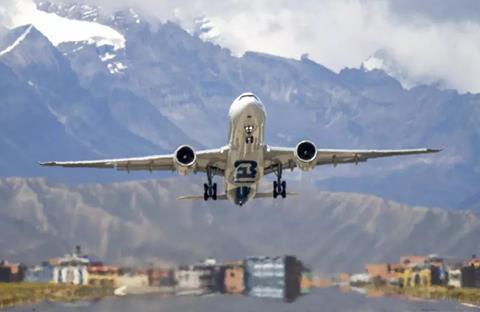Airbus is expecting its A330neo to secure clearance to operate at higher-altitude airports early next year, following a series of flight tests in Latin America to demonstrate performance capabilities in hot-and-high environments.
The airframer flew the A330-900 flight-test airframe, MSN1795, to Mexico and Bolivia for a two-week campaign in the second half of March to illustrate take-off and landing capabilities in the warm and rarified atmospheres.
While the earlier A330-200 and -300 models are each certified by the European Union Aviation Safety Agency to operate at airport altitudes up to 12,500ft, the authority has only formally approved the A330-800 and -900 to altitudes of 8,000ft.
Airbus says it should obtain 12,500ft certification for the A330neo in the first quarter of 2025.
“This will be especially beneficial for airline customers whose networks require such operations,” it states.

Airbus conducted tests at Toluca airport, just west of Mexico City, which has a runway elevation of 8,461ft (2,579m).
But it also carried out flights at Bolivia’s La Paz airport, where the runway lies at 13,111ft, presenting a greater challenge to aircraft owing to the reduction in lift and thrust from air thinned not only by the high altitude but also the warm local climate.
Airbus evaluated climb and approach performance as well as systems checks covering engine starts, low-speed taxiing and rejected take-off.
“In the case of the engine starts – a crucial part of the campaign – the tests included special instrumentation to measure the starter air pressure, which would be affected by the high airport altitude,” it states.
Opening the altitude envelope of the A330neo would enable it to serve airports including Colombia’s gateway, Bogota, which lies at 8,358ft.
“We can show to the operators – the current one or the new ones – that the aircraft reaches the same capability of the [earlier A330 variants] in terms of high-altitude operations, and with the advantage that the A330neo is much more fuel efficient,” says Airbus test pilot Capt Franck Busnel, who led the campaign.
Preliminary results from the tests indicate “good performance and behaviour” of the A330-900 and its Rolls-Royce Trent 7000 engines, the airframer states.


























